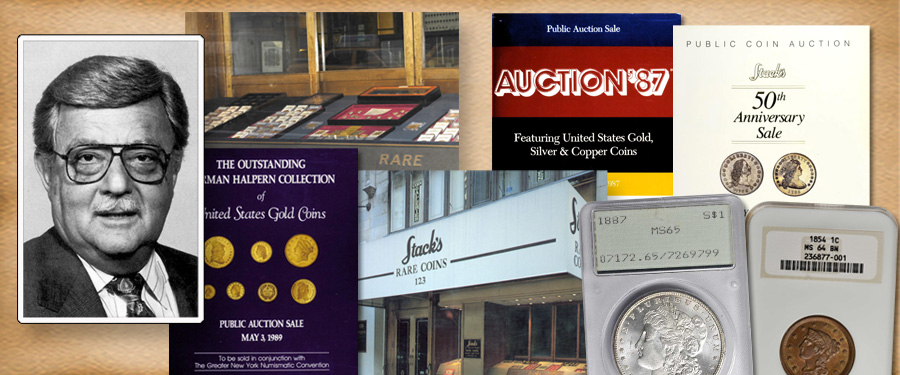
1989 was a year of great growth in the numismatic hobby. Many collectors entered the field, stimulated by the Mint’s advertising program that promoted Mint sets, Proof sets and special commemoratives with the line "An investment in the future." This attracted young collectors to the field and appealed to their relatives who bought them these new issues to put away for the "future." Additionally, special reports from Wall Street by Salomon Brothers showed that coins were increasing in value more rapidly than art, precious metals and other collectibles, and this too was a stimulus.
Rare coin collections that came to market in private sales and public auctions also exhibited increased value when their results were reported. Confidence in grading was encouraged by the acceptance of the new grading services who provided assurance to many buyers about what they were actually purchasing.
Stack’s continued to be a leader in the public coin auction market, by offering a group of extremely rare collections in the United States series, as well as foreign and ancient coins. In 1989, our firm brought to market 13 separate catalogs in as many sale events. Established collectors had great opportunities to add to their collections and they participated enthusiastically, in many cases establishing new record prices. In order to prepare for this growth in the hobby, which we at Stack’s had anticipated, our staff had been increased by professional numismatists in all fields. While my father, Morton, my Uncle Joseph and my cousin Ben had passed away, the Stack family continued to be represented by me, my cousin Norman, and my son Larry among the numismatists, while my daughter Susan was in charge of bookkeeping and, eventually, my granddaughter Rebecca also came to work for the firm. Besides our family, we made sure we had an extensive staff, all of whom were committed to creating exciting sales and informative catalogs. Stack’s reputation in the field and our ability to attract experts to work with us meant that over the years the staff at Stack’s would include some of the most famous names in numismatics. This had been true in decades past and continued to be true in 1989 and as we made our way into the last decade of the 20th century. With Larry, Norman and myself and the great help of those who worked with us, we were able to maintain our leadership in the industry and help it grow.
In 1989, I became president of the Professional Numismatists Guild (PNG), after serving more than a decade on the Board. I was proud that when we were challenged by the Federal Trade Commission, (FTC) regarding the possibility of having dealers all licensed by the FTC and ruled by very strict rules and restrictions, I was chosen to debate the Commissioner at a public coin show. The Metropolitan New York Convention in May of 1989 was the place selected. It was a big challenge and I, together with a colleague, were part of the dealer team, while the FTC was being represented by Director Barry Cutler and his New England office representative. The debate was surely important as the new licensing proposed by the FTC would hamper the coin industry as it had functioned for many years.
Of course, the FTC was trying to address real problems in the coin industry, including counterfeits that were being offered in ads and on convention floors, the misgrading of coins and false representations of rarity and value that were being used by "promoters" to take advantage of those who didn’t know better. There was bad advice being given, coin packages being sold and not delivered, and other dealings that were wrong and illegal. I selected Luis Vigdor, manager of the banking house of Manfra, Tordella, and Brooks in New York as my partner for the debate. Besides being a great numismatist, Luis dealt in bullion related coins, and understood buying and selling in that market. This was the support that I felt I needed to make my case for the hobby’s professional dealers, auctioneers and of course the "mom and pop" small shops all about the country.
Fortunately, I also had a great relationship with Coin World, and Margo Russell and Beth Deisher of that publication offered to do research for me to reinforce my position on regulations of the hobby business. They spent lots of time researching the hobby, and sent me many pages of evidence showing that the coin industry did not have to be regulated as were other "second-hand dealerships" like hock shops, pawnshops, jewelers, bullion dealers and refiners. As you will see in my next article, their research helped win the argument that I was to present for our industry.





